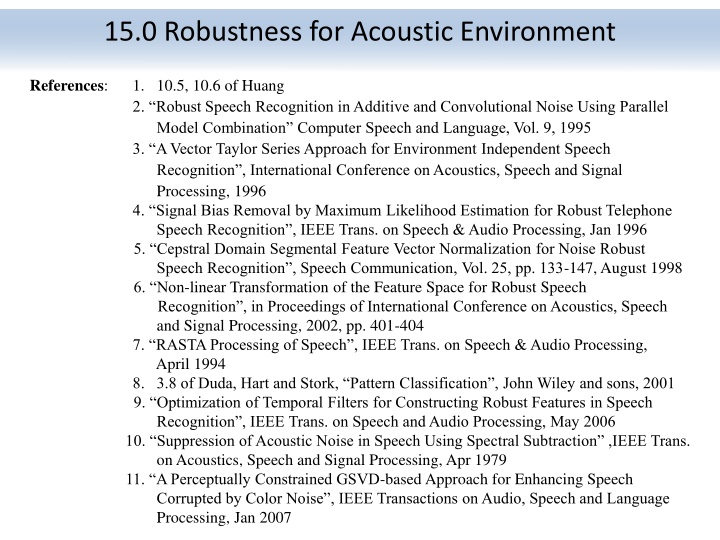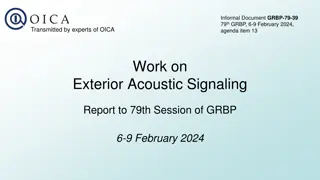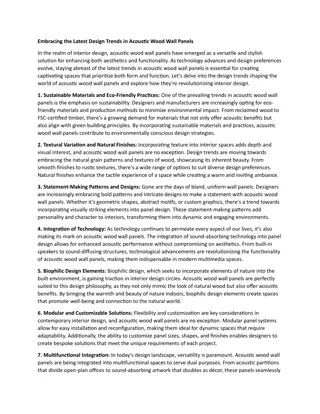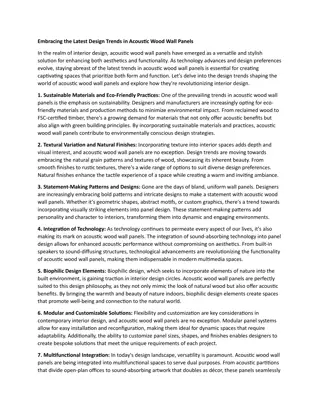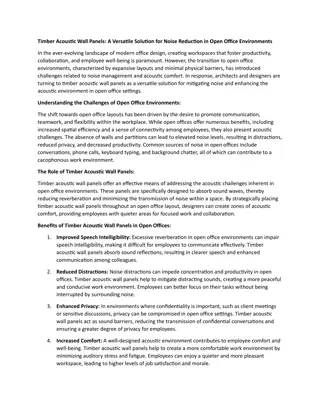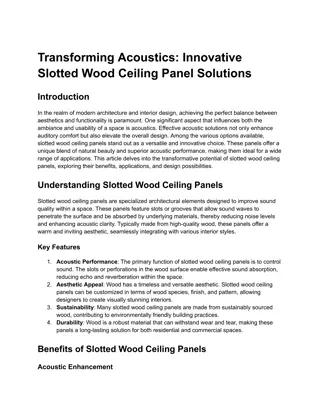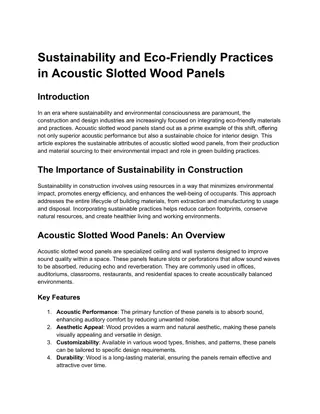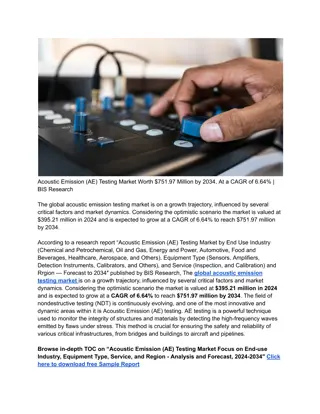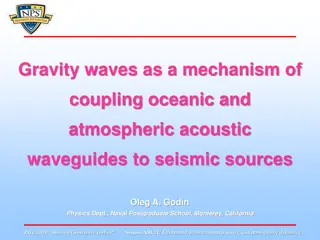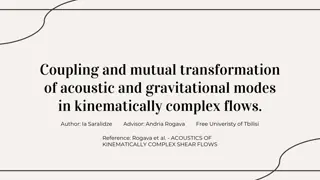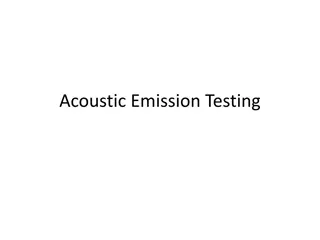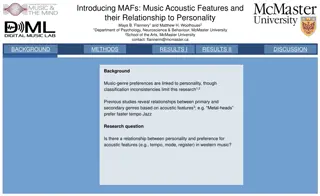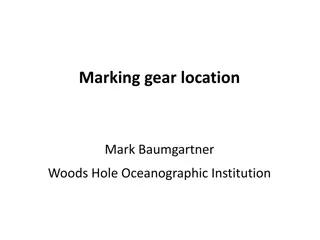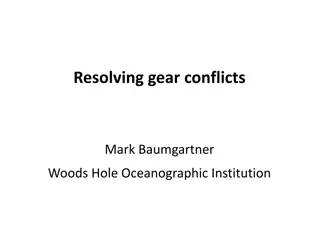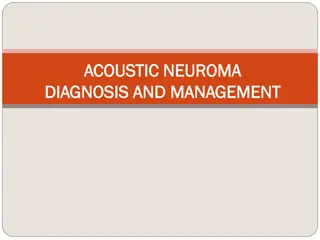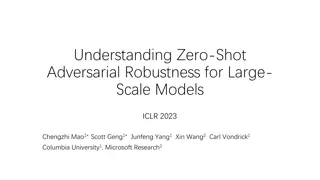15.0 Robustness for Acoustic Environment
This content delves into techniques for improving speech recognition accuracy in noisy acoustic environments by addressing mismatches and implementing model-based approaches such as parallel model combination. Various references, methods, and considerations for optimizing acoustic robustness are discussed in detail.
Download Presentation

Please find below an Image/Link to download the presentation.
The content on the website is provided AS IS for your information and personal use only. It may not be sold, licensed, or shared on other websites without obtaining consent from the author.If you encounter any issues during the download, it is possible that the publisher has removed the file from their server.
You are allowed to download the files provided on this website for personal or commercial use, subject to the condition that they are used lawfully. All files are the property of their respective owners.
The content on the website is provided AS IS for your information and personal use only. It may not be sold, licensed, or shared on other websites without obtaining consent from the author.
E N D
Presentation Transcript
15.0 Robustness for Acoustic Environment References: 1. 10.5, 10.6 of Huang 2. Robust Speech Recognition in Additive and Convolutional Noise Using Parallel Model Combination Computer Speech and Language, Vol. 9, 1995 3. A Vector Taylor Series Approach for Environment Independent Speech Recognition , International Conference on Acoustics, Speech and Signal Processing, 1996 4. Signal Bias Removal by Maximum Likelihood Estimation for Robust Telephone Speech Recognition , IEEE Trans. on Speech & Audio Processing, Jan 1996 5. Cepstral Domain Segmental Feature Vector Normalization for Noise Robust Speech Recognition , Speech Communication, Vol. 25, pp. 133-147, August 1998 6. Non-linear Transformation of the Feature Space for Robust Speech Recognition , in Proceedings of International Conference on Acoustics, Speech and Signal Processing, 2002, pp. 401-404 7. RASTA Processing of Speech , IEEE Trans. on Speech & Audio Processing, April 1994 8. 3.8 of Duda, Hart and Stork, Pattern Classification , John Wiley and sons, 2001 9. Optimization of Temporal Filters for Constructing Robust Features in Speech Recognition , IEEE Trans. on Speech and Audio Processing, May 2006 10. Suppression of Acoustic Noise in Speech Using Spectral Subtraction ,IEEE Trans. on Acoustics, Speech and Signal Processing, Apr 1979 11. A Perceptually Constrained GSVD-based Approach for Enhancing Speech Corrupted by Color Noise , IEEE Transactions on Audio, Speech and Language Processing, Jan 2007
Mismatch in Statistical Speech Recognition y[n] O =o1o2 oT W=w1w2...wR Feature Extraction x[n] Search h[n] output sentences input signal original speech feature vectors acoustic reception microphone distortion phone/wireless channel n2(t) n1(t) additive noise additive noise Text Corpus Speech Corpus Acoustic Models Language Model Lexicon convolutional noise Mismatch between Training/Recognition Conditions Mismatch in Acoustic Environment Environmental Robustness additive/convolutional noise, etc. Mismatch in Speaker Characteristics Speaker Adaptation Mismatch in Other Acoustic Conditions speaking mode:read/prepared/conversational/spontaneous speech, etc. speaking rate, dialects/accents, emotional effects, etc. Mismatch in Lexicon Lexicon Adaptation out-of-vocabulary(OOV) words, pronunciation variation, etc. Mismatch in Language Model Language Model Adaptation different task domains give different N-gram parameters, etc. Possible Approaches for Acoustic Environment Mismatch O =o1o2 oT Acoustic Models x[n] Feature Extraction Model Training i= (Ai , Bi , i ) (training) (recognition) Search and Recognition Feature Extraction O =o 1o 2 o T y[n] Acoustic Models Model-based Approaches i= (A i , B i , i ) Feature-based Approaches Speech Enhancement
Model-based Approach Example 1 Combination (PMC) Parallel Model Basic Idea primarily handling the additive noise the best recognition accuracy can be achieved if the models are trained with matched noisy speech, which is impossible a noise model is generated in real-time from the noise collected in the recognition environment during silence period combining the noise model and the clean-speech models in real-time to generate the noisy-speech models Basic Approaches performed on model parameters in cepstral domain noise and signal are additive in linear spectral domain rather than the cepstral domain, so transforming the parameters back to linear spectral domain for combination allowing both the means and variances of a model set to be modified Parameters used : the clean speech models a noise model Clean speech HMM Noisy speech HMM Cepstral domain C-1 C Noise HMM exp log Model combination Linear Spectral domain
Parallel Model Combination (PMC) processing processing
Model-based Approach Example 1 Combination (PMC) Parallel Model The Effect of Additive Noise in the Three Different Domains and the Relationships Linear power spectral domain X( )=S( ) +N( ) Xl=log(X), log exp Sl=log(S) S=exp(Sl) Nl=log(N) N=exp(Nl) Log spectral domain ( exp log = ( ) S ( ) ) + l l l exp X N Nonlinear combination Xc=CXl, C C-1 Sc=CSl Sl=C-1Sc Nc=CNl Nl=C-1Nc Cepstral domain ( exp C ( ) ( ) ) = + 1 1 c c c C C log exp X S N
Model-based Approach Example 1 Combination (PMC) The Steps of Parallel Model Combination (Log-Normal Approximation) : based on various assumptions and approximations to simplify the mathematics and reduce the computation requirements Parallel Model Log-spectral domain Linear spectral domain Cepstral domain ( ) 2 = exp + ( ) l i l ii exp = 1 l c C l i c 1 Noise HMM s = l ij = 1 1 l c T C C ( ) l c ij i j ~ ~ Clean speech HMM s ~ = = + g ~ + 2 g Noisy speech HMM s ) 1 + ( ( ) 1 ) 1 + = = = ( l c l C log log ii l i i 2 i c 2 = l ij c l T C C log ij l c i j
Model-based Approach Example 2 Vector Taylors Series (VTS) Basic Approach Similar to PMC, the noisy-speech models are generated by combination of clean speech HMM s and the noise HMM Unlike PMC, this approach combines the model parameters directly in the log-spectral domain using Taylor s Series approximation Taylor s Series Expansion for l-dim functions: c f d c x dx 2 2 n ( ) ( 2 ) ( ) df c d f c 1 1 = + + + 2 n ( ) ( ) ( ) ( ) ( ) f x f c x c x c ! n n dx dx f(x) f(x) x c x
Vector Taylors Series (VTS) Given a nonlinear function z=g(x, y) x, y, z are n-dim random vectors assuming the mean of x, y, x, yand covariance of x, y, x, yare known then the mean and covariance of z can be approximated by the Vector Taylor s Series ) , ( ( 2 x ( ( ) ( x j i x x i i i i 2 2 ( , ) g g 1 i i i ii ii = + + x y x y ( , ) ) g z x y x y 2 2 i i y i i i j j i j j ( , ) ( , ) , ) ( , ) g g g g i, j: dimension index x y x y x y x y ij ij ij = + ) , z y y y i j Now Replacing z=g (x, y) by the Following Function ( ) exp exp log N S X + = ( ( ) ) l l l the solution can be obtained log( x e = i i + 1 e s n i i i ii ii + + + ) ( ) e s n s n i i 2 + 2 ( ) e e s n i j i j e e e e s s n n ij ij ij = + ( )( ) ( )( ) x s n i i j j i i j j + + + + e e e e e e e e s n s n s n s n
Feature-based Approach Example 1 Cepstral Moment Normalization (CMS, CMVN) and Histogram Equalization (HEQ) Cepstral Mean Subtraction(CMS) - Originally for Covolutional Noise convolutional noise in time domain becomes additive in cepstral domain (MFCC) y[n] = x[n] h[n] y = x+h , most convolutional noise changes only very slightly for some reasonable time interval x = y h if h can be estimated Cepstral Mean Subtraction(CMS) assuming E[x] = 0 , then E[y] = h , x, y, h in cepstral domain averaged over an utterance or a moving window, or a longer time interval xCMS= y E[y] CMS features are immune to convolutional noise x[n] convolved with any h[n] gives the same xCMS CMS doesn't change delta or delta-delta cepstral coefficients Signal Bias Removal estimating h by the maximum likelihood criteria h*= arg maxProb[Y = (y1y2 yT) | , h] , iteratively obtained via EM algorithm CMS, Cepstral Mean and Variance Normalization (CMVN) and Histogram Equalization (HEQ) CMS equally useful for additive noise CMVN: variance normalized as well HEQ: the whole distribution equalized Successful and popularly used : HMM for the utterance Y h xCMVN= xCMS/[Var(xCMS)]1/2 y=CDFy-1[CDFx(x)]
Cepstral Moment Normalization CMVN: variance normalized as well xCMVN= xCMS/[Var(xCMS)]1/2 Px(x) Py(y) Px(x) Py(y) CMS Py(y) Px(x) CMVN
Histogram Equalization HEQ: the whole distribution equalized y = CDFy-1[CDFx(x)] cumulative distribution function (c. d. f.) 1.0 CDFy( ) probability density function (p. d. f.) CDFx( ) x y
Feature-based Approach Example 2 RASTA ( Relative Spectral) Temporal Filtering Temporal Filtering each component in the feature vector (MFCC coefficients) considered as a signal or time trajectories when the time index (frame number) progresses the frequency domain of this signal is called the modulation frequency performing filtering on these signals RASTA Processing : assuming the rate of change of nonlinguistic components in speech (e.g. additive and convolutional noise) often lies outside the typical rate of the change of the vocal tract shape designing filters to try to suppress the spectral components in these time trajectories that change more slowly or quickly than this typical rate of change of the vocal tract shape a specially designed temporal filter for such time trajectories ( ) ( 1 1 z z b MFCC Features New Features + + + 1 3 4 a a z a z a z = 0 1 3 4 B z ) 1 4 B(z) B(z) yt B(z) Frame index Frame index feature vectors Modulation Frequency (Hz )
Temporal Filtering x[n], x(t) F t, n Frequency C1[n] C3[n] C1[n] F Modulation Frequency C3[n]
Features-based Approach Example 3 Data-driven Temporal Filtering (1) PCA-derived temporal filtering temporal filtering is equivalent to the weighted sum of a sequence of a specific MFCC coefficient with length L slided along the frame index maximizing the variance of such a weighted sum is helpful in recognition the impulse response of Bk(z) can be the first eigenvector of the covariance matrix for zk ,for example Bk(z) is different for different k B1(z) B2(z) Original feature stream yt Bn(z) Frame index L zk(1) zk(2) zk(3)
Filtering filtering: convolution
Principal Component Analysis (PCA) (P.11 of 13.0) Problem Definition: for a zero mean random vector x with dimensionality N, x RN, E(x)=0, iteratively find a set of k (k N) orthonormal basis vectors {e1, e2, , ek} so that (1) var (e1T x)=max (x has maximum variance when projected on e1 ) (2) var (eiTx)=max, subject to ei ei-1 e1, 2 i k (x has next maximum variance when projected on e2 , etc.) Solution: {e1, e2, , ek} are the eigenvectors of the covariance matrix for x corresponding to the largest k eigenvalues new random vector y Rk: the projection of x onto the subspace spanned by A=[e1e2 ek], y=ATx a subspace with dimensionality k N such that when projected onto this subspace, y is closest to x in terms of its randomness for a given k var (eiTx) is the eigenvalue associated with ei Proof var (e1Tx) = e1TE (x xT)e1= e1T e1= max, subject to |e1|2=1 using Lagrange multiplier J(e1) e1 J(e1)= e1TE (x xT)e1- (|e1|2-1) , E (xxT) e1 = 1e1 , var(e1Tx) = 1= max similar fore2with an extra constraint e2Te1 = 0, etc. = 0
Linear Discriminative Analysis (LDA) Linear Discriminative Analysis (LDA) while PCA tries to find some principal components to maximize the variance of the data, the Linear Discriminative Analysis (LDA) tries to find the most discriminative dimensions of the data among classes x2 /a/ /i/ x1 w1
Linear Discriminative Analysis (LDA) Problem Definition wj, jand Ujare the weight (or number of samples), mean and covariance for the random vectors of class j, j=1 N, is the total mean = j j W w 1 : matrix scatter class - between S S within - class scatter matrix : w U N = = j 1 ( )( ) T N j = B j j j find W=[w1 w2 wk], a set of orthonormal basis such that ) ( max arg W S W w tr T W S W tr = W B T ( ) W tr(M): trace of a matrix M, the sum of eigenvalues, or the total scattering WTSB,WW: the matrix SB,Wafter projecting on the new dimensions Solution the columns of W are the eigenvectors of Sw-1SBwith the largest eigenvalues
Linear Discriminative Analysis (LDA) = N = within-class scatter matrix: S w U W j j 1 j undesired desired
Linear Discriminative Analysis (LDA) S ( ) tr = max B S ( ) tr w T W S W ( ) tr = W arg max W B T W S W ( ) tr w tr(M): trace of a matrix M, the sum of eigenvalues, or the total scattering WTSB,WW: the matrix SB,Wafter projecting on the new dimensions
Linear Discriminative Analysis (LDA) = N Between-class scatter matrix: = T S ( )( ) w B j j j 1 j ?:total mean
Features-based Approach Example 3 Data-driven Temporal Filtering (2) LDA/MCE-derived Temporal Filtering For a specific time trajectory k Frame index 1 2 3 4 5 Divided into classes LDA/MCE criteria zk(1) zk(2) zk(3) 3 LDA/MCE-derived filter 2 Class 1 zk (wk1 , wk2, wk3 )=wkT xk=wkTzk New time trajectory of features Filtered parameters are weighted sum of parameters along the time trajectory (or inner product)
Speech Enhancement Example 1 Spectral Subtraction (SS) Speech Enhancement producing a better signal by trying to remove the noise for listening purposes or recognition purposes Background Noise n[n] changes fast and unpredictably in time domain, but relatively slowly in frequency domain, N(w) y[n] = x[n] + n[n] Spectrum Subtraction |N(w)| estimated by averaging over M frames of locally detected silence parts, or up-dated by the latest detected silence frame |N(w)|i= |N(w)|i-1+(1- ) |N(w)|i,n |N(w)|i: |N(w)| used at frame i |N(w)|i,n : latest detected at frame i signal amplitude estimation |X(w)|i= |Y(w)|i- |N(w)|i , if |Y(w)|i- |N(w)|i> |Y(w)|i = |Y(w)|i transformed back to x[n] using the original phase performed frame by frame useful for most cases, but may produce some musical noise as well many different improved versions if |Y(w)|i- |N(w)|i |Y(w)|i ^ ^
Spectral Subtraction Y( ) N( ) 1 2 3
Speech Enhancement Example 2 Signal Subspace Approach Signal Subspace Approach representing signal plus noise as a vector in a K-dimensional space signals are primarily spanned in a m-dimensional signal subspace the other K-m dimensions are primarily noise projecting the received noisy signal onto the signal subspace signal plus noise projected on signal subspace signal subspace (m-dim) clean speech signal plus noise (K-dim)
Speech Enhancement Example 2 Signal Subspace Approach An Example Hankel-form matrix signal samples: y1y2y3 yk yL yM y1y2y3y4 yk y2y3y4 yk+1 Hy= y3y4 .yk+2 . . . . . . . . . . . . yLyL+1 n Hyfor noisy speech Hnfor noise frames yM Generalized Singular Value Decomposition (GSVD) UTHyX = C =diag(c1, c2, ck), c1 c2 ck VTHnX = S =diag(s1, s2, sk), s1 s2 sk subject to U, V, X : matrices composed by orthogonal vectors Which gives ci> sifor 1 i m, signal subspace si> cifor m+1 i k, noise subspace 1 , 1 s c i i = + 2 2 i K
Signal Subspace (m-dim) (K-m)-dim
Speech Enhancement Example 3 Audio Masking Thresholds Audio Masking Thresholds without a masker, signal inaudible if below a threshold in quite low-level signal (maskee) can be made inaudible by a simultaneously occurring stronger signal (masker). masking threshold can be evaluated global masking thresholds obtainable from many maskers given a frame of speech signals make noise components below the masking thresholds threshold in quiet masking threshold masker maskee ( ) 0.01 0.1 1 10 100 1000 log
Speech Enhancement Example 4 Wiener Filtering Wiener Filtering estimating clean speech from noisy speech in the sense of minimum mean square error given statistical characteristics ) ( H y(t) x(t) clean speech n(t) noise E[(y(t)-x(t))2]=min an example solution : assuming x(t), n(t) are independent ) ( ) ( S S n x = S 1 = = Power Spectral Density H x + + ( ) ( ) 1 ( E / ) ( ) S = S n x 2 2 ( ) { [ ( )] }, S ( ) { [ ( )] } S E F x t F n t n x
